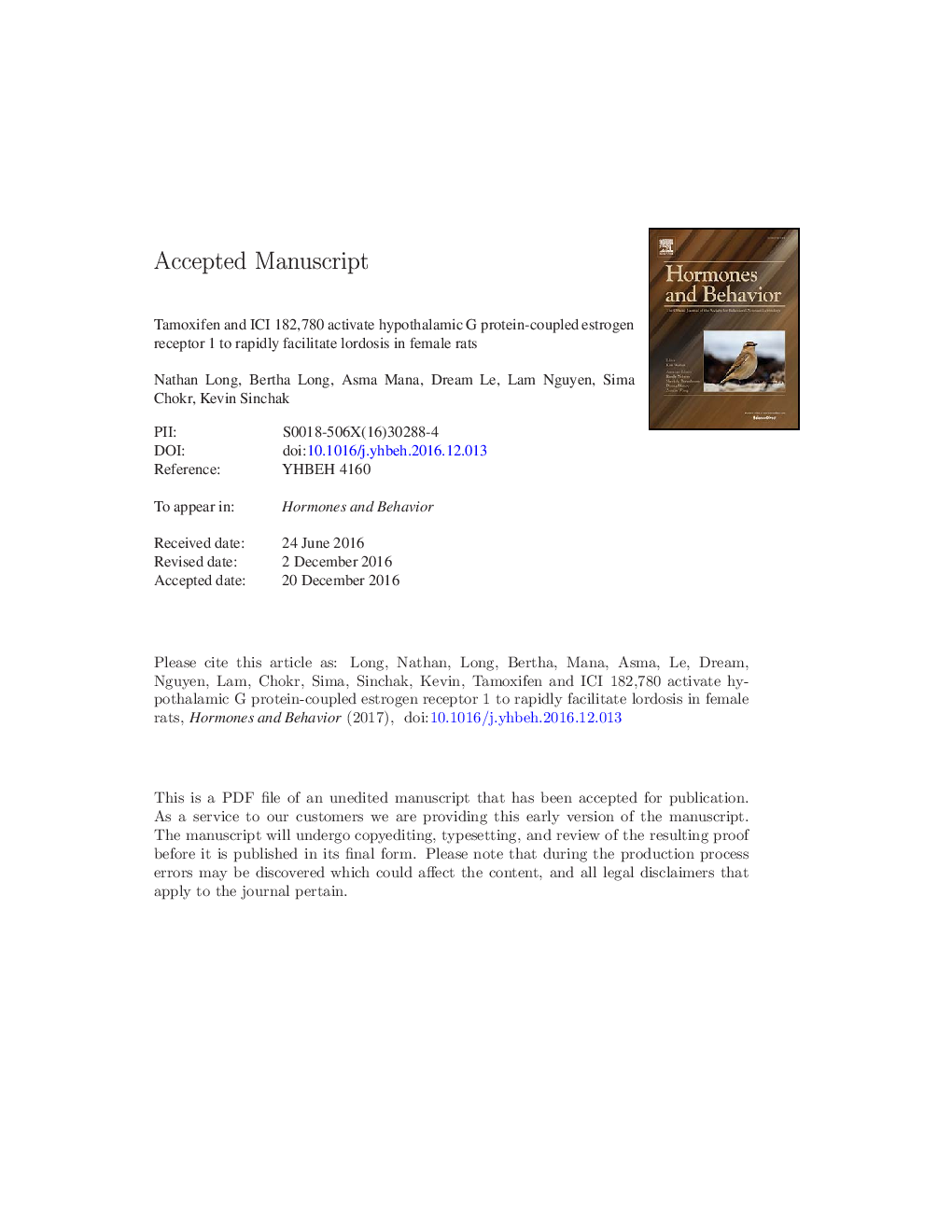| Article ID | Journal | Published Year | Pages | File Type |
|---|---|---|---|---|
| 4931168 | Hormones and Behavior | 2017 | 27 Pages |
Abstract
In the female rat, sexual receptivity (lordosis) can be facilitated by sequential activation of estrogen receptor (ER) α and G protein-coupled estrogen receptor 1 (GPER) by estradiol. In the estradiol benzoate (EB) primed ovariectomized (OVX) rat, EB initially binds to ERα in the plasma membrane that complexes with and transactivates metabotropic glutamate receptor 1a to activate β-endorphin neurons in the arcuate nucleus of the hypothalamus (ARH) that project to the medial preoptic nucleus (MPN). This activates MPN μ-opioid receptors (MOP), inhibiting lordosis. Infusion of non-esterified 17β-estradiol into the ARH rapidly reduces MPN MOP activation and facilitates lordosis via GPER. Tamoxifen (TAM) and ICI 182,780 (ICI) are selective estrogen receptor modulators that activate GPER. Therefore, we tested the hypothesis that TAM and ICI rapidly facilitate lordosis via activation of GPER in the ARH. Our first experiment demonstrated that injection of TAM intraperitoneal, or ICI into the lateral ventricle, deactivated MPN MOP and facilitated lordosis in EB-primed rats. We then tested whether TAM and ICI were acting rapidly through a GPER dependent pathway in the ARH. In EB-primed rats, ARH infusion of either TAM or ICI facilitated lordosis and reduced MPN MOP activation within 30 min compared to controls. These effects were blocked by pretreatment with the GPER antagonist, G15. Our findings demonstrate that TAM and ICI deactivate MPN MOP and facilitate lordosis in a GPER dependent manner. Thus, TAM and ICI may activate GPER in the CNS to produce estrogenic actions in neural circuits that modulate physiology and behavior.
Keywords
Related Topics
Life Sciences
Biochemistry, Genetics and Molecular Biology
Endocrinology
Authors
Nathan Long, Bertha Long, Asma Mana, Dream Le, Lam Nguyen, Sima Chokr, Kevin Sinchak,
